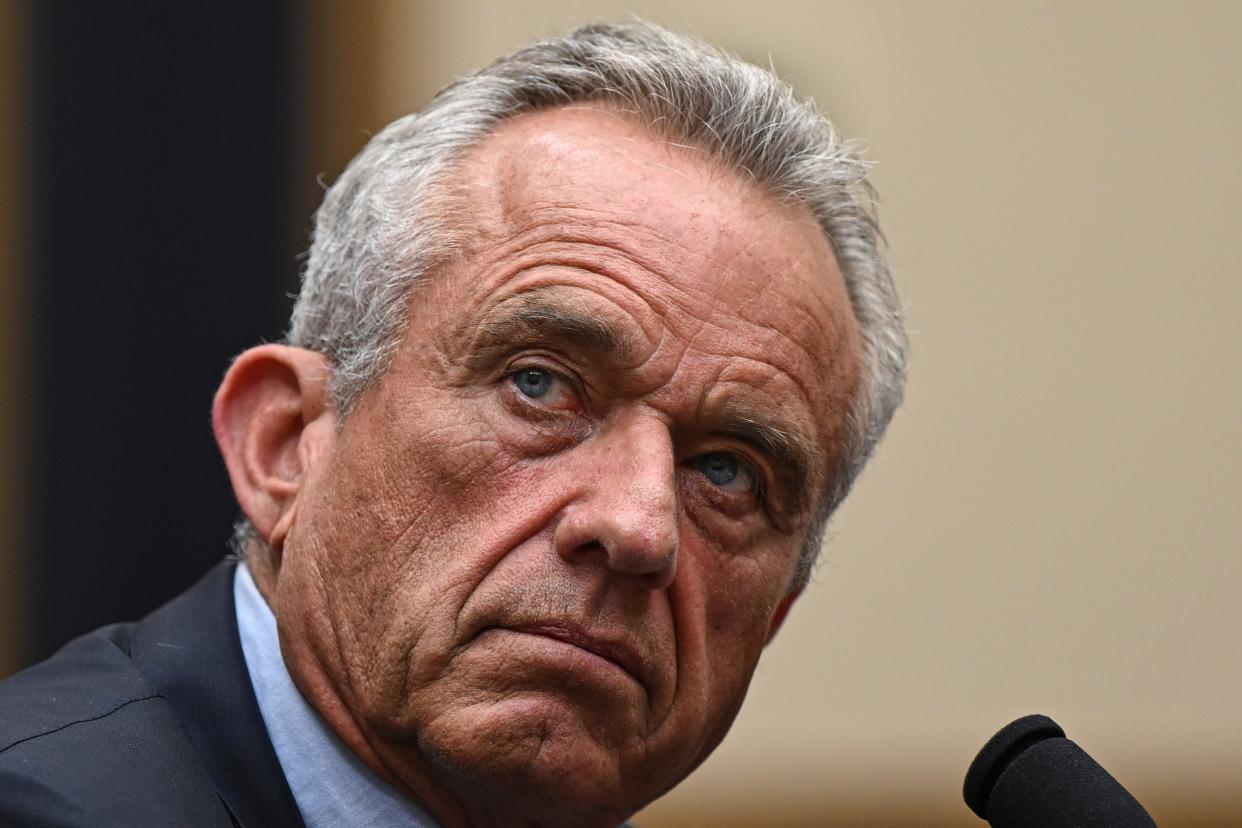Don't worry about 'No labels' or other third-party candidates...if you're the incumbent

- Oops!Something went wrong.Please try again later.
- Oops!Something went wrong.Please try again later.
- Oops!Something went wrong.Please try again later.
The party “No Labels” is seeking to appoint a pair of candidates. Robert F. Kennedy Jr. is interviewing vice-presidential potential picks. And who knows what Cornel West is up to. But one thing we can see from the data is that contrary to popular opinion, third parties can be spoilers, but are more likely to hurt challengers, not the incumbents.
It’s easy to conclude otherwise. Third parties and major independent challengers ran in 1912, 1924, 1948, 1968, 1980, 1992, 1996 and 2000. In a majority of cases (1912, 1968, 1980, 1992, 2000), the party in power or incumbent lost those contests.
But a closer look at the evidence from the 20th Century shows in an overwhelming majority of cases, the third party or incumbent cut into the opposition, giving the incumbent a better chance than if it were a two-party race.
In 1924, evidence shows Progressive Republican Bob LaFollette held the Democrats to their lowest showing ever since 1860, or thereafter, taking more voters pulled from John Davis than President Calvin Coolidge. In 1948, even with two Democratic Party challengers (Strom Thurmond, Hank Wallace), President Harry Truman beat the GOP’s Tom Dewey.
In 1968, VP Hubert H. Humphrey could not hold the White House for the Democrats, losing to the GOP’s Richard Nixon and Democratic Governor George Wallace. But Nixon and Wallace competed with each other for the same conservative votes, enabling Humphrey to make a much closer showing than he would have with that horribly divided party from the Chicago Convention. Wallace almost became an Electoral College spoiler, denying Nixon a majority.
Of the 1980 and 1992 elections, Gregg Easterbrook claims “Carter lost because a third-party vanity candidate, John Anderson, siphoned off liberal voters. The elder Bush lost because a third-party vanity candidate, Ross Perot, siphoned off conservative voters.” But Salon’s Steve Kornacki shows that in 1980 “Anderson finished with just 5.7 million votes on Election Day -- or 6.6 percent of the vote. Reagan's margin over Carter? 8.4 million votes, or 9.7 percent. In other words, even if you awarded every single vote for Anderson to Carter, the president still would have finished with nearly three million fewer popular votes than Reagan. Moreover, we know that many Anderson voters preferred Reagan -- not Carter -- as their second choice; so without Anderson in the race, Reagan still would have won easily.”
As for 1992, simple survey math undermines that argument. Looking at the Gallup polls, you can see that as Perot peaked, Clinton tanked. When Perot dropped out, Clinton jumped to a 56%-32% lead. When Perot reentered the race, Clinton dropped to single digits, for a narrow four percentage point win. If you don’t believe me, see the polls from the early and later parts of the 1992 election for yourself. Kornacki concurs. “A comprehensive national exit poll found that Perot voters were divided almost evenly on their second choice and that Clinton -- in a two-
way race -- would still have beaten Bush by 5.8 million votes (his actual margin was 5.3 million in initial '92 tally).”
The biggest exception is Ralph Nader of the Green Party. While there was no incumbent president on the ballot in 2000, Nader received a much smaller share of the vote than many of these candidates listed. But Nader is credited with undermining the chances of the incumbent party, led by Vice President Al Gore, the Democratic nominee, who could have held the White House for his party with even a handful of Nader supporters added to his tally. Just a small percentage of the nearly 100,000 votes the Green Party nominee received in Florida would have been enough to tip the election to Gore.
So for those who think that “No Labels” or RFK Jr. or someone else will sink Biden, think again. Such challengers historically split the opposition, even helping some struggling incumbents win or improve their standing in the election.

John A. Tures is a professor of political science at LaGrange College in LaGrange, Georgia. His views are his own. He can be reached at jtures@lagrange.edu.
This article originally appeared on Palm Beach Post: Odds favor incumbent when third-party candidates run

